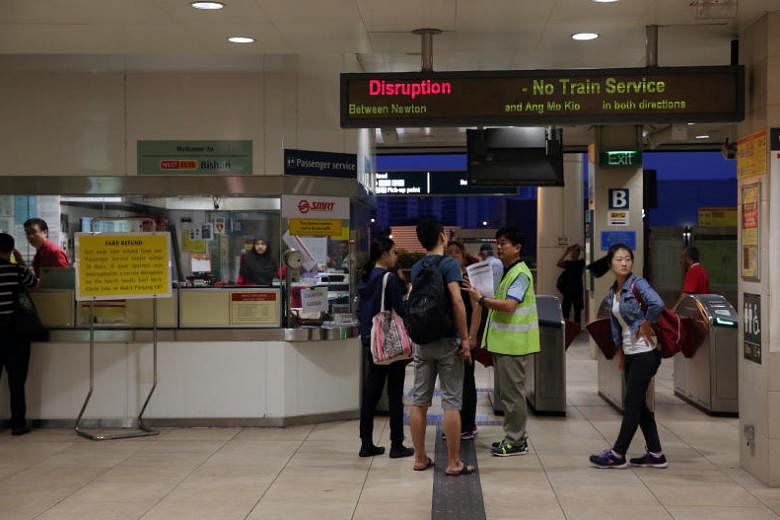SINGAPORE - Saturday's (Oct 7) massive rail disruption caused by a torrential downpour is yet another reminder of how crucial it is for Singapore to prepare itself for climate change.
It also raises questions on systems in place in the rail network to deal with a common issue in the tunnels: water.
From most accounts, rainwater from Saturday's storm - which looks likely to recur today and in the days ahead - had entered the North-South Line's tunnels via the tunnel opening at Bishan, where the line surfaces to go above ground.
It is not a new phenomenon, even if the severity of the downpour may have been among the worst.
In such cases, when water gets into the tunnels, pumps below the tracks are supposed to kick in to evacuate the deluge.
As preliminary findings show, the pumps malfunctioned. The question here is: Why? And if they had worked, would they have been able to cope with the deluge?
Granted, these pumps are located below the tracks and are hard to service. Hence, they must be extremely robust and maintenance-free.
And they must be tested periodically to ensure they are still in good working order.
If it is a capacity issue, then the Land Transport Authority (LTA), which now owns all operating and fixed assets on the line, should beef up the auto-drainage system as soon as possible.
Of course the perennial fiscal debate of whether to spend money to prepare for that 50-year storm will arise yet again, but with the weather becoming more erratic as we speak, the more relevant question is whether we can afford not to.
Look to Tokyo as an example. The city has installed a multibillion-dollar mega flood drainage system, which is the world's largest. It will cope with anything, short of a catastrophic tsunami.
Why? Because the cost of that low-probability storm it is preparing for will be far higher than the bill for the infrastructure.
In rainy Singapore, we have taken similar, if smaller, steps to avert the outcome of changing climate. We have raised the coastal road in Changi, so that the rising sea will not affect our airport nearby.
We have installed the Marina Barrage. And since the Orchard Road flooding, we have upped our drain maintenance.
But Saturday's incident shows that we need to do more.
If it is just a matter of pumps, it would be fairly simple to address: Repair, replace or redouble.
But if the assessment is that no amount of pumps would have been able to cope with Saturday's storm, then we may need to come up with new solutions.
Indeed, the LTA just completed its flood mitigation measures for the MRT network recently. The authority was not available to say why they did not work this time, but suffice to say, the measures have shown to be inadequate.
Saturday may have been the first time that floods disrupted MRT service here. But it was a disruption that ranked among the most severe, with no service on our most heavily used sector for close to 21 hours.
The extent of damage to trains and equipment has yet to be determined.
The only small mercy was that it did not occur during a weekday peak. But if appropriate steps are not taken, it will only be a matter of time before it will.
The last thing we want is packed trains stuck in a tunnel with rising water. And a fire sparked by a moisture-induced short circuit.


